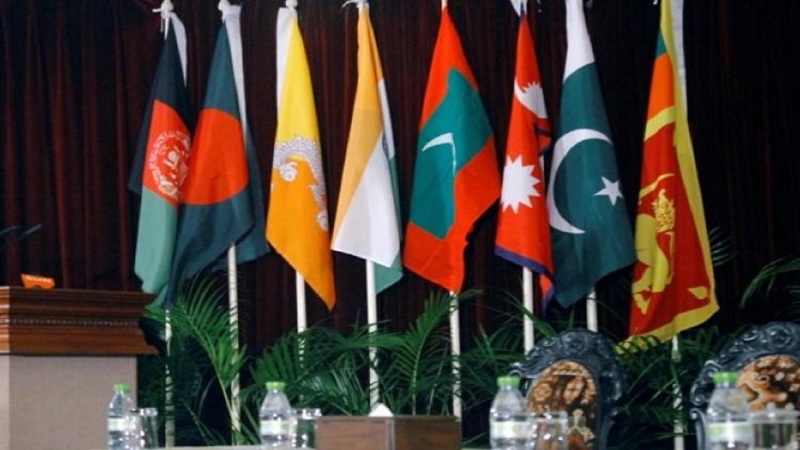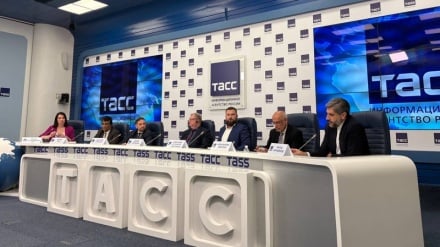India’s ‘free-riding’ strategy dooms SAARC
The nationalist politics that assured Indian Prime Minister Narendra Modi a second term in office – and particularly his determination to isolate Pakistan – has doomed the South Asian Association for Regional Cooperation (SAARC) in favor of the Bay of Bengal Initiative for Multi-Sectoral Technical and Economic Cooperation (BIMSTEC).
Here we present you an interesting feature that appeared on Asia Times, titled, “India’s ‘free-riding’ strategy dooms SAARC”, by Kathmandu based Nepali university Professor, Bhim Bhurtel.
SAARC comprises Afghanistan, Bangladesh, Bhutan, India, Maldives, Nepal, Pakistan and Sri Lanka, and about 1.8 billion people live in the region. Its gross domestic product totaled nearly US$3.5 trillion in 2018. Despite being the world’s most vibrant area in terms of demographic dividend, the most diverse region culturally and linguistically, and being bound by religious, linguistic, cultural, musical, culinary an and historical ties, South Asia is one of the least integrated areas in the world.
Led by India, the South Asian Free Trade Agreement (SAFTA) decreed to liberalize trade in 2006. The region missed its target of achieving zero duties and eliminating all non-tariff barriers across the region by 2016. Its anticipated goal to transform SAARC into a South Asian Economic Union seemed a far cry.
South Asia is sparsely integrated, such that intra-regional trade accounts for only 5% of South Asia’s regional GDP, according to a World Bank study. Similarly, intra-regional investment flows are very low, a study by South Asia Watch on Trade, Economics and Environment (SAWTEE) reveals. India-SAARC trade amounted to only $19 billion last year, whereas India’s trade with the rest of the world stood at $637.4 billion.
India-SAARC trade statistics paint a desolate picture of South Asian economic integration. Nearly 53% of intra-SAARC imports remain subject to tariff, para-tariff, and non-tariff barriers despite the enactment of SAFTA.
Although SAARC missed its regional integration bid, it is fully evolved as a regional institution. It has adopted 14 agreements, and rules of procedures including two charters to establish SAARC and its specialized organs. It has also adopted seven regional conventions and 12 other regional agreements.
During the military standoff between China and India at Doklam, the tri-junction of Bhutan, China and India, in the summer of 2017, Indian strategists felt their shortfall of strategic autonomy as a world player. Such autonomy is determined by hard and soft power, as Harvard Professor Joseph Nye depicts. Politics, diplomacy, economics, military, and technology are hard powers and persuading friends and allies for a policy goal without coercion is soft power.
Indian strategists realized that a world power needs to use “smart power” by blending hard power (economic, military, and technological) with soft power, and India severely lacks the ability to do this.
Indian strategists seem mindful of the changing dynamics of Sino-US superpower rivalry as compared with Cold War-era US-USSR enmity. The current superpower rivalry in the multipolar world is multidimensional, and India needs a multi-vector strategy. Keeping in mind the current size of the economy, India’s strategists conclude that India cannot afford both hard and soft power. Modi’s National Security Adviser Ajit Doval covertly hinted the very fact in his Sardar Patel memorial lecture organized by All India Radio in New Delhi on October 18, 2018. Indian strategists are also heedful of globalization has unfolded unprecedented power dimensions in the state powers than ever before.
Considering these facts, Modi chose Subrahmanyam Jaishankar as minister for external affairs and designated Doval to a ministerial rank to calibrate the twin pillars of his strategic and diplomatic initiatives in his second term. The first pillar aims to harness the liberal world order and other regional efforts optimally. The second pillar is multi-vector foreign-policy engagement with superpowers and neighbors to fulfill its national interests with minimum liability in order to be a global player within 10 years.
China has had to invest far less than its actual economic capacity as compared with other advanced economies in global affairs in the past. China started its assertive role on the global stage only after it became a $10 trillion economy. China has successfully used all possible positive externalities created by the liberal world order to reach its current posture. India wants to replicate the two-and-a-half-decade-long Chinese experience, although the global context has changed substantially now.
For instance, India wants to use the Shanghai Cooperation Organization to tap opportunities created by the SCO in reaching Central Asian nations. That is why India has been sharing the SCO forum with Pakistan. India wants to maneuver the Quadrilateral Security Dialogue (Quad) as part of the Indo-Pacific strategy of the US for the development of the maritime capability to deter and defend its interests in the Indian Ocean and its rimland along with trade and investment from Australia, Japan and the US.
Similarly, India wants to engage with Russia bilaterally and through groupings such as the RIC (Russia, India, and China) forum. India wants special attention in cooperation and partnership from China without taking part in China’s flagship Belt and Road Initiative.
The modality of cooperation is likely to be finalized at the informal summit between Modi and Chinese President Xi Jinping that is to be held in October in the Indian city of Varanasi.
BIMSTEC comprises seven states, five from SAARC – Bangladesh, Bhutan, India, Nepal and Sri Lanka – and two from ASEAN (Association of Southeast Asian Nations), Myanmar and Thailand. The region is crucial, as more than one-fifth of the world’s population lives in the seven countries. The group has a combined GDP of about $2.7 trillion, and 25% of the world’s traded goods pass through the Bay of Bengal every year.
The manifest reasons India has been giving to make SAARC defunct is Pakistan’s alleged emboldening of terrorist activities against India. However, the latent reason is that India is not in a position to lead the regional body either in terms of hard power or soft power. India cannot financially afford the full-scale implementation of the institutions and rules SAARC has created so far in India’s leadership.
India wants to use BIMSTEC as the alternative to the SAARC. The reasons behind this are very straightforward.
First, India has comparatively “good” relations with the BIMSTEC countries, unlike Pakistan.
Second, India can “free-ride” in BIMSTEC countries because it doesn’t have to incur any cost associated with this grouping. The Asian Development Bank and other international creditors have already invested in South Asia Subregional Economic Cooperation (SASEC) projects. These projects aim to develop transport, trade facilitation, energy development, and economic-corridor development in BIMSTEC countries. The cumulative investment in the region reached about $11 billion in 2018. SASEC aims to invest $130 billion by 2026.
Third, unlike SAARC, BIMSTEC focuses only on four areas of cooperation. India has to invest in Indian SASEC projects only. Therefore, BIMSTEC is “low-hanging fruit” for India.
Modi’s aides aim to hunt two birds with a single stone. By subsuming BIMSTEC into its foreign-policy plan and strategy, India ostensibly wants to seclude Pakistan in SAARC. However, India wants to evade its financial and political liabilities to the SAARC institutions and rules entirely on one hand, and on the other hand, India wants to “free-ride” the BIMSTEC forum.
According to New Delhi’s assumptions, once it becomes a world power in the future, regional groupings like SAARC and BIMSTEC will be irrelevant for India. Similarly, Pakistan, the second-largest economy in the region, also will be free from its financial responsibility to SAARC if it vanishes. The institution and rules India created to prove itself as a regional player have since become unaffordable. Thus there seems to be no plausible logic to indicate that SAARC will be revived in the future.
SS/SS



